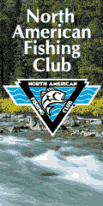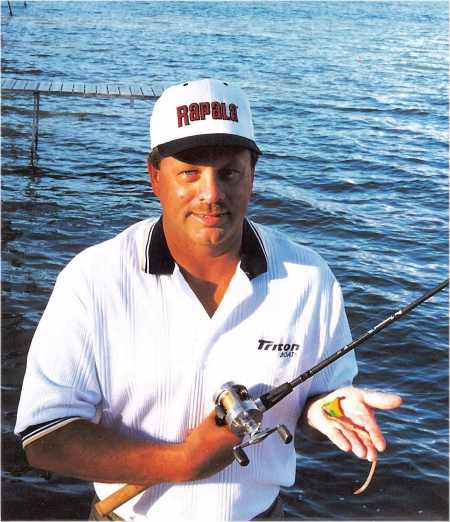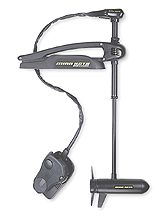
|
|||||||

Free 90 day Risk free trial offer click here 
|
By JOHN KOLINSKI
Editor's note: John Kolinski is an eight-time championship qualifier during his seven years of professional fishing on the Professional Walleye Trail and Masters Walleye Circuit. His articles can be read in a number of publications and at top walleye-fishing sites on-line. ----- There comes a point each fishing season when slowing down is the best way to speed up your walleye catch rate. When the crankbait bite crawls to a halt on our Midwestern lakes and rivers, or when your travels take you to big bodies of crystal-clear water like the Great Lakes, it may be time to break out the bait box and go for a spin. And while I've successfully fished spinner rigs and live bait as early as April and as late as November, they have proven most effective during that late-summer to early-fall period when walleyes are nomadic, forage is abundant, and a little finesse is in order.
blade and bead size and color to bait choice, weighting options and lead lengths, they can be adapted to effectively work everything from deep-water structure to shallow stained-water bays That shallow-water bite rates as one of my favorites. Walleyes in skinny water are usually aggressive and explosive. It's also one of the simplest situations in which to present a spinner rig. When walleyes can be located in water from 3-10 feet deep, bottom bouncers, drop weights and snap weights aren't usually necessary. I like to slide a 1/8th-ounce bullet weight or split-shot onto my line and use a 6- to 8-foot leader back to a crawler harness. If there's any floating debris in the water, such as weeds broken loose by waves and wind, the bullet weight will usually catch them before they foul your rig, and keep you fishing effectively. In those cases, a two-hook harness is probably the way to go just in case any debris gets past the in-line weight. When the water is free of debris, three-hook harnesses will help you hook and hold more fish. Certainly, shallow-water walleyes can be spooky, especially in calm conditions.
Structure these days often includes zebra mussels that can slice through monofilament or fray Fireline instantly. Rather than risk losing the walleye of a lifetime, add a couple of line floats to the rig in place of the beads. Open-water calls for a third presentation. Instead of in-line weights or bouncers, snap weights come into play. These fish are usually located in extremely clear water. In-line weights and bottom bouncers run too close to the spinner and harness for these skittish fish. Snap-weighting eliminates those concerns. It's a method that requires a bit of fine-tuning to find the most effective combination, but I usually start with a leader of 20-30 feet, then attach the lightest weight I can depending on water depth, wind and wave action and trolling speed, which is typically the slowest I can go and keep the spinner blades turning. The tricky part is determining how far to let the snap weight out after clipping it to the line. It will depend on where the active walleyes are located within the water column. There are books and charts available to help anglers put the right numbers together. Another method is to run however many lines the local law allows with different lead lengths from the snap weight to the rod. Once you find the one that is working, just adjust the rest accordingly. No matter how you present spinner rigs, it's important to understand that you are not trying to appeal to a walleye's appetite. It's unlikely that nightcrawlers factor seriously into the diets of open-water walleyes or even those late-summer 'eyes in shallow water situations. Rather, spinner rigs attract walleyes through the color of the blades and beads, the sound and vibration the blades or rattle beads make and, ultimately, the scent the bait provides. Big Colorado-style blades can be deadly and I almost always fish at least one as large as a No. 7.
friends add stick-on eyes to their blades for extra attraction. With very few exceptions, spinner rigs should be fished as far away from the boat and as far apart as traffic allows. In clear water, it's inefficient to fish rigs so close together that the same fish can see two of them at once. In open-water situations, walleyes are often suspended and will move away from an approaching boat. They'll shy away from boats and motors in shallow water, too.  in-line planer boards take care of those concerns by carrying lines as
far away from the boat as the angler desires, and the new Tattle Flag additions
let you know if a small fish or any debris has found the hooks. For many
of the same reasons, it's often productive to impart a fluttering action
to your rigs when the wind won't do it for you. In calm water, simply put
the motor in neutral for a few seconds before engaging it again or troll
in an "S" pattern that will keep the speed of your spinner rigs changing
constantly and moving up and down through the water column. Some anglers
experience frequent line twist that can be caused by tight turns, incorrectly
hooked crawlers or minnows, inoperative swivels or a combination of all
three. Make sure when you hook a crawler that you catch just the tip of
the head with the top hook and force the crawler to stretch out and straighten
itself so the other hook or hooks go in through the same side. When I fish
minnows or chubs on spinners, I've found that pushing the hook through
the top of the head first and out through the mouth rather than
in-line planer boards take care of those concerns by carrying lines as
far away from the boat as the angler desires, and the new Tattle Flag additions
let you know if a small fish or any debris has found the hooks. For many
of the same reasons, it's often productive to impart a fluttering action
to your rigs when the wind won't do it for you. In calm water, simply put
the motor in neutral for a few seconds before engaging it again or troll
in an "S" pattern that will keep the speed of your spinner rigs changing
constantly and moving up and down through the water column. Some anglers
experience frequent line twist that can be caused by tight turns, incorrectly
hooked crawlers or minnows, inoperative swivels or a combination of all
three. Make sure when you hook a crawler that you catch just the tip of
the head with the top hook and force the crawler to stretch out and straighten
itself so the other hook or hooks go in through the same side. When I fish
minnows or chubs on spinners, I've found that pushing the hook through
the top of the head first and out through the mouth rather than
the other way around keeps them swimming straight. Adding an extra swivel can also help reduce twist. Finally, it pays to take good care of your spinner blades. There's no reason to allow blades to tarnish or let the paint chip off by throwing them carelessly into a tackle box compartment. I keep my blades looking shiny and new by storing them in 2x3 ziplock bags according to size and color, and storing them in a compartmentalized Flambeau 5004 tackle box. As summer begins to fade, don't forget about all the options spinner rigs provide. When the water's clear and forage is abundant, it may be just the change of pace needed to relocate a few fat, sassy walleyes to your livewell. E-mail John Kolinski Please visit these site sponsors |
||||||
|---|---|---|---|---|---|---|---|


